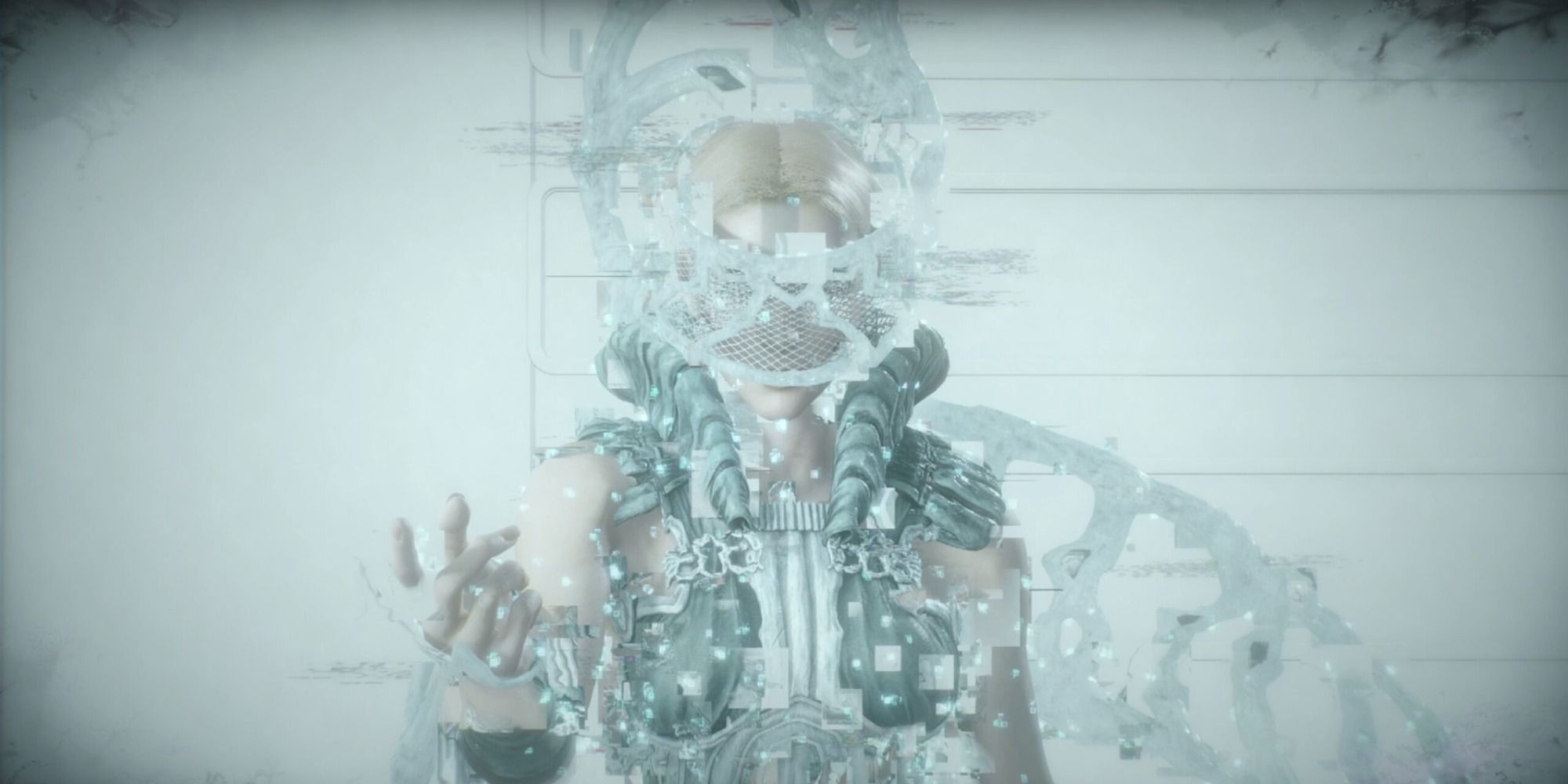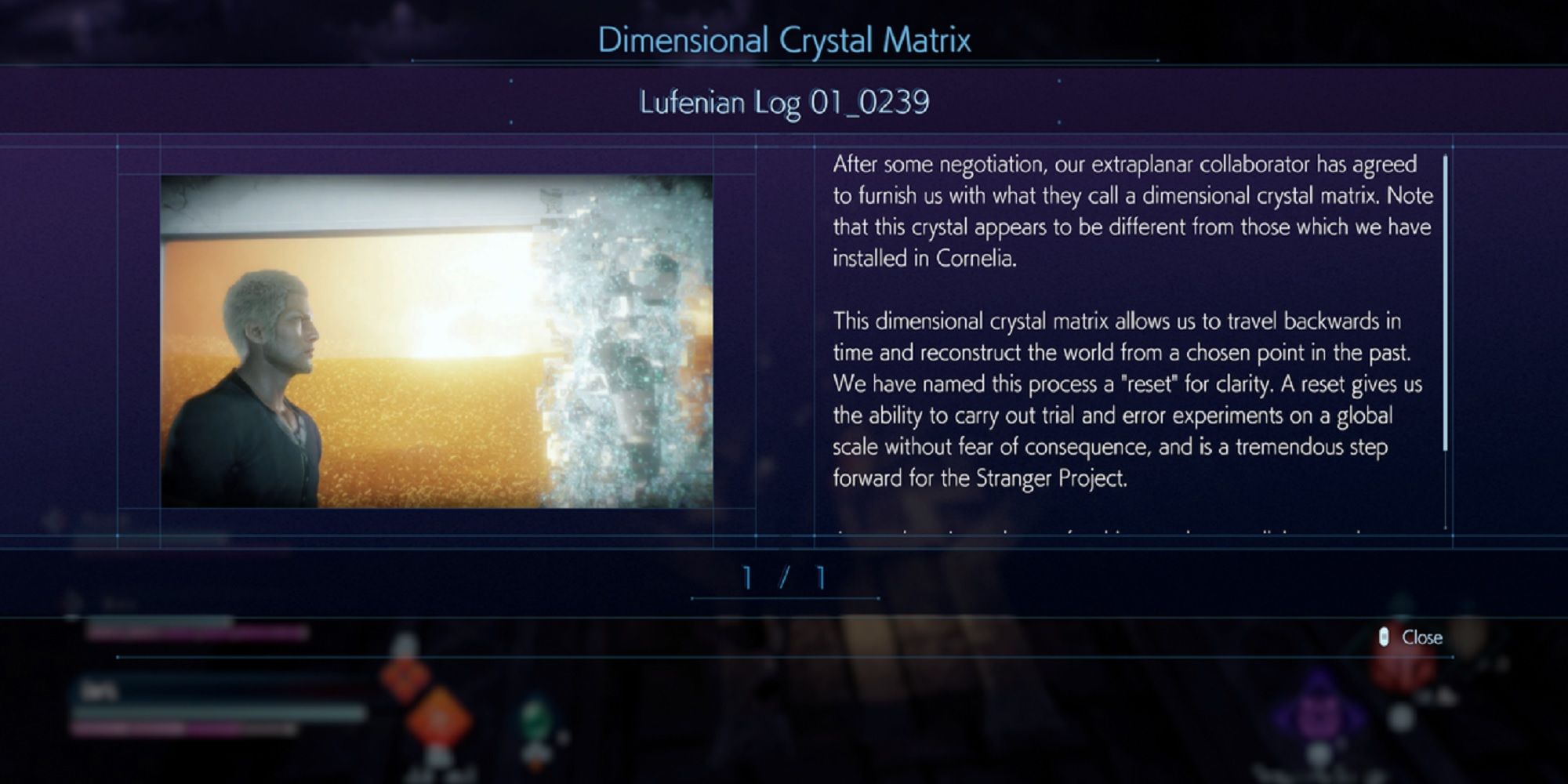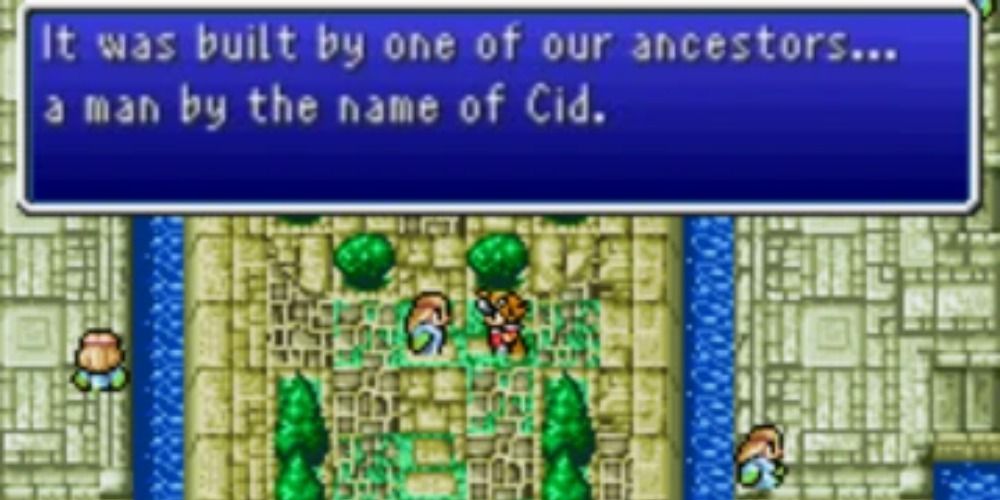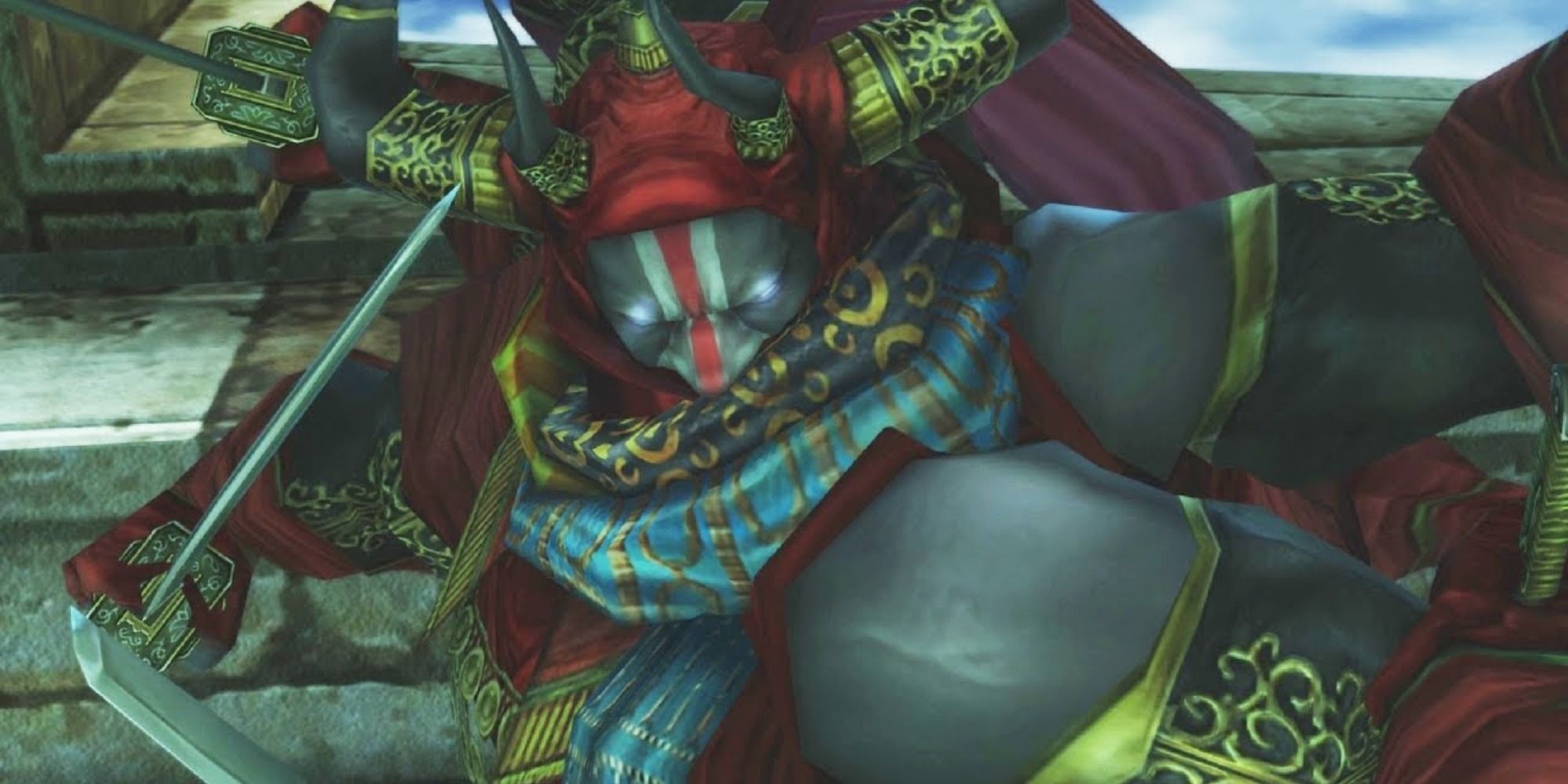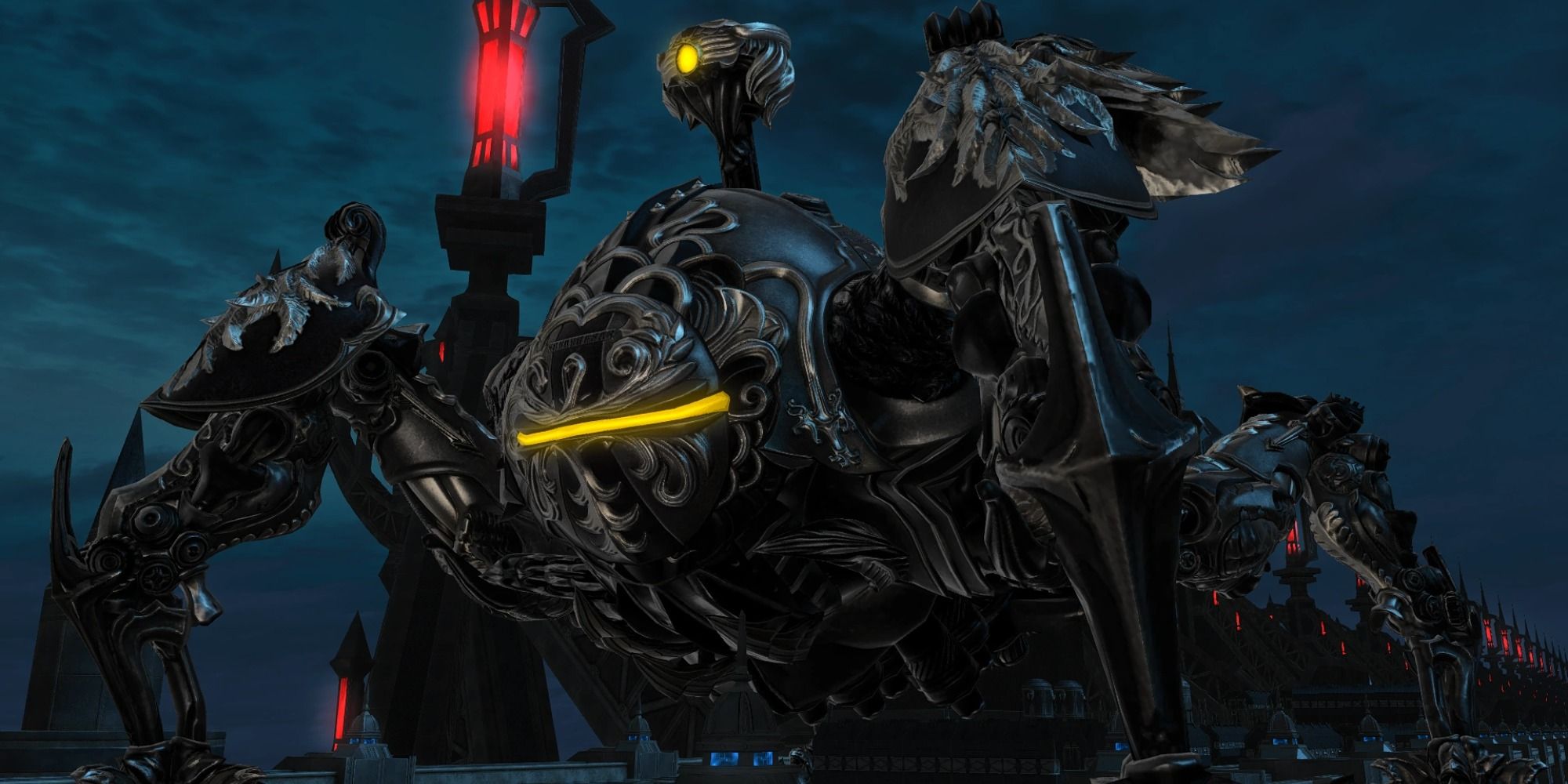Quick Links
Stranger of Paradise: Final Fantasy Origin has a far more complex story than the trailers let on, and delving deeper into it is one of the joys of the late-game experience, along with the hack-n-slash combat and loot collecting.
One way the game conveys its lore to you is through Lufenian Reports - ten of them gathered throughout the game. These provide background over the Stranger Project, time travel, and a mysterious collaborator who goes unnamed, their identity redacted.
There will be major spoilers from here on out.
Who Is The Extraplanar Collaborator?
As explained through the Lufenian Reports, the mysterious collaborator is the individual who gifted the Lufenians with the dimensional crystal matrix. This item allows the Lufenians to turn back time and enact what they name a "reset" - this prompts their cycle of experimentation on the world of Cornelia and the other dimensions they have access to.
When the world is reset, a vast amount of energy is generated - in return for the dimensional crystal matrix, the collaborator is given this energy.
In this way, the extraplanar collaborator is the facilitator of the game's plot and would be the true antagonist for Jack and co.
From the reports, we know the following about the extraplanar collaborator:
- They have in-depth knowledge of human nature and emotion.
- They have an in-depth understanding of the link between human emotions and light and darkness.
- They proposed a new project that involved pumping the world with darkness, prompting a new reset every time the balance tipped too far.
While we cannot know for certain until future DLCs potentially reveal the collaborator's identity, we have some theories about who they could be.
Theory One: Cid Of The Lufaine
A few characters from the original Final Fantasy do not show up in Stranger of Paradise, such as Matoya and Sarda - this is odd, considering that the games are so closely linked. It is tempting, then, to consider that any of these might end up being the extraplanar collaborator. An important character is Cid of the Lufaine, and he isn't even mentioned in this game.
In the original game, Cid of the Lufaine is a posthumous character responsible for constructing the airship, the ultimate method of transportation for the party. While his identity as one of Final Fantasy's Cids is a detailed added to the game's remakes and ports, it does make Stranger of Paradise's lack of any Cid all the more striking.
Considering his technological expertise, it's not out of the realm of possibility for this game's Cid to be the one to discover the means for time travel and the Lufenian's resets. His motive for acquiring the energy could be to power some greater project - something tackled in a DLC, perhaps.
The biggest drawback to this theory is that the extraplanar collaborator is unlikely to be a Lufenian themselves, as they are hinted to be a total unknown to the Lufenians writing the logs. This isn't to say that Cid couldn't simply be an unknown Lufenian from the past or even not a Lufenian at all.
It's worth noting that Cid of the Lufaine plays a similar role to the extraplanar collaborator in Dissidia, where he is responsible for the creation of Cosmos and Chaos, who bear a close resemblance to light and darkness, respectively. In those games, Cid plays the role of silent observer, but his role in the endless wars cannot be understated. It would be just like Stranger of Paradise to make reference to a past Final Fantasy game through the collaborator's identity.
Theory Two: Gilgamesh
Speaking of past references, it's also quite inexplicable that Gilgamesh isn't in the game. This sword-swinging, big-talking, theatrical villain-maybe-not-villain originates from Final Fantasy 5 and has popped up all over the series.
Specifically, Gilgamesh is well-acquainted with the interdimensional rift and would be no stranger to the odd clash of physics that would lead to something like the dimensional crystal matrix existing. It's sorta-canon that the vast majority of his appearances are as the same character, solidifying his penchant for dimension-hopping into his character arc. Not only that, but this would explain the collaborator's vast knowledge of human nature and the nature of light and darkness - he's seen a lot in his time.
While it would be great to see Gilgamesh come back as a boss fight, perhaps in one of his more villainous roles, it would be even better if he was revealed to be pure-hearted this time around. It would make more sense for his goal of gathering energy to be a plan to get home to Bartz's world. Alternatively, that energy could simply be nourishment for his companion, Enkidu. With Gilgamesh, you don't really need that much justification for his actions.
With SoP's love-hate relationship with seriousness, either scenario seems plausible.
Theory Three: Omega
The basis for this theory is also rooted in Final Fantasy 5 lore. Omega is a recurring superboss from the Final Fantasy games who first appears in the fifth installment's interdimensional rift. In that game, it was but a mindless killing machine. Further entries have given it a little more personality.
In Final Fantasy 14, Omega is deployed as an anti-primal weapon, a supreme line of defense created by an extra-terrestrial race. During the Deltascape raids of the Stormblood expansion, Omega was revealed to be an alien and capable of creating life, learning, and evolving. It's clear that expanding Omega's role is something that can be done.
With both Omega's link to interdimensionality and their semblance of a personality in 5 and 14, respectively, it becomes more and more plausible that the strange benefactor to the Lufenians is another version of the weapon. It would explain how Omega is able to provide so much information and knowledge to the Lufenians - Omega likely has the processing power of a supercomputer.
This theory also has the strongest idea of what the collaborator's motive might be: power. As a machine-based lifeform, Omega would need the energy harvested during each reset to keep running, power up new or ultimate weapons, or to upgrade itself. The possibility of Omega being the final, final boss of Stranger of Paradise also doesn't sound too farfetched.

